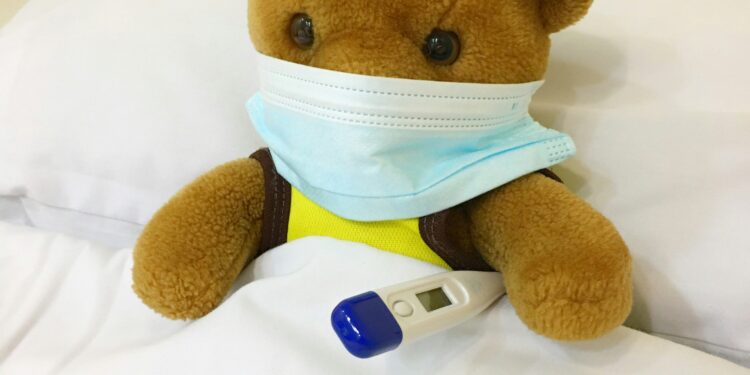An Old Virus Finds New Ground
In 2000, the Centers for Disease Control and Prevention declared measles eliminated from the United States. Today, that declaration reads less like a milestone and more like a memorial. As of June 2025, the U.S. has recorded 1,046 confirmed measles cases, the highest count in over thirty years, with multiple outbreaks across New York, Texas, California, and Florida.
This resurgence has not occurred in spite of medical progress, but because of its selective rejection. The MMR vaccine—a highly effective, two-dose immunization that prevents measles, mumps, and rubella—remains widely available and covered by public and private insurance. Yet uptake is faltering, especially in districts where vaccine skepticism has become socially or politically normalized.
According to recent CDC data, kindergarten MMR coverage dropped to 93% in 2024, dipping below the herd immunity threshold of 95% necessary to suppress measles transmission (CDC Immunization Survey). While national averages mask regional disparities, local epidemiologists have flagged entire school districts with coverage rates under 80%—an invitation for viral re-entry.
The Mechanics of an Outbreak
Measles is not subtle. It is among the most contagious human pathogens, with a basic reproduction number (R₀) of between 12 and 18, meaning each infected person can spread the virus to up to 18 others in a susceptible population. It travels via airborne droplets, lingers in enclosed spaces for up to two hours, and infects 90% of exposed, unvaccinated individuals.
The consequences are not benign. Complications include pneumonia, encephalitis, hearing loss, and death, particularly in infants, immunocompromised individuals, and pregnant women. Despite its familiar presentation—a red rash, fever, cough, and conjunctivitis—measles can unravel into medical crises requiring intensive care.
In the current wave, over a third of cases have required hospitalization, according to data compiled by the American Academy of Pediatrics. Several have involved unvaccinated children too young to receive their first dose. These children, reliant on community-level immunity for protection, now face preventable risk due to localized pockets of parental refusal.
The Persistence of Vaccine Hesitancy
The epidemiological contours of measles are well understood. The social variables that now shape its trajectory are less so. Vaccine hesitancy is not a single doctrine but a spectrum of distrust—ranging from generalized anxiety over side effects to conspiratorial beliefs rooted in pseudoscience and disinformation.
A Kaiser Family Foundation survey conducted earlier this year found that 17% of American parents believe the MMR vaccine carries “hidden risks” not disclosed by physicians. 8% outright refuse all childhood immunizations. These figures, while numerically modest, are epidemiologically consequential. Because measles is so contagious, even small drops in local vaccination can ignite outbreaks.
Fueling this shift is a fragmented media environment, in which discredited theories—such as those linking MMR to autism, originally promoted in a since-retracted 1998 paper—persist across alternative news channels and social platforms. The Center for Countering Digital Hate estimates that vaccine misinformation accounts for nearly 65% of engagement on health-related TikTok content in select states (source).
The Politics of Contagion
Complicating matters further is the politicization of vaccination. While public health officials across administrations have consistently endorsed routine immunization, state-level policies have increasingly diverged. In 2023, Florida removed school-based vaccine reporting requirements. Several other states, including Idaho and Missouri, broadened the scope of “philosophical exemptions,” making it easier for parents to decline vaccines without medical justification.
As a result, outbreaks correlate more closely with political geography than population density. Counties with low vaccination rates are not random—they reflect ideological climates in which institutional mistrust has been socially reinforced, often under the guise of personal freedom.
Such trends are not merely academic. They threaten the legal architecture of public health, long predicated on mutual obligation and shared vulnerability. As Harvard Law School’s Petrie-Flom Center argues in its recent white paper on vaccine governance, the erosion of vaccine mandates “transforms immunization from a collective norm into an individual choice with public consequences.”
Institutional Response: Too Slow, Too Cautious?
In response to the current outbreaks, the CDC has reissued school immunization reminders and published multilingual vaccination toolkits. Yet many clinicians argue these actions lack urgency. Contact tracing remains uneven, particularly in under-resourced public health departments, and misinformation continues to circulate faster than corrections.
The Biden administration has allocated emergency funds to support mobile vaccination clinics, but implementation has been hindered by logistical challenges and public resistance in high-risk areas. Pediatricians report verbal hostility during routine appointments, and some have been advised by legal counsel to avoid direct confrontation on immunization, for fear of reputational harm or harassment.
Meanwhile, European health officials are watching the U.S. situation with concern. In France and Italy, which experienced their own measles resurgences in the late 2010s, policy changes were swift and blunt: mandatory vaccination laws tied to school enrollment. Whether similar measures will be considered in the U.S. remains politically unviable, even as the consequences of inaction multiply.
A Future of Normalized Risk?
Perhaps the most disquieting outcome of the current outbreak is the possibility that measles may become functionally endemic in the United States—a background presence periodically flaring in susceptible communities. This would mark a regression not merely in medical control, but in cultural expectations of public health.
To younger generations, measles may no longer feel like a historical artifact, but a recurring feature of American life. The burden of protection, once dispersed across a cooperative immunization program, becomes individualized, with parents making high-stakes medical decisions under the pressure of online commentary and ideological contagion.
In that sense, the measles resurgence is not a failure of medicine. It is a failure of narrative.
Rebuilding a Vaccination Ethic
The long-term resolution requires more than fact sheets and clinic access. It demands a reinvigoration of public trust, grounded in transparency, civic duty, and consistent messaging. Public health officials must engage not only in reactive correction, but proactive narrative framing—meeting communities where misinformation circulates, not simply where vaccines are administered.
Medical institutions should invest in trust-based partnerships with religious leaders, parent advocacy groups, and bilingual health educators. Meanwhile, federal agencies must support cross-platform content verification, pushing platforms like TikTok and YouTube to elevate reputable health sources over algorithmically engaging contrarians.
None of these solutions will be swift. But the alternative—a future where preventable disease is met with shrugs, excuses, and denial—cannot be sustained.















